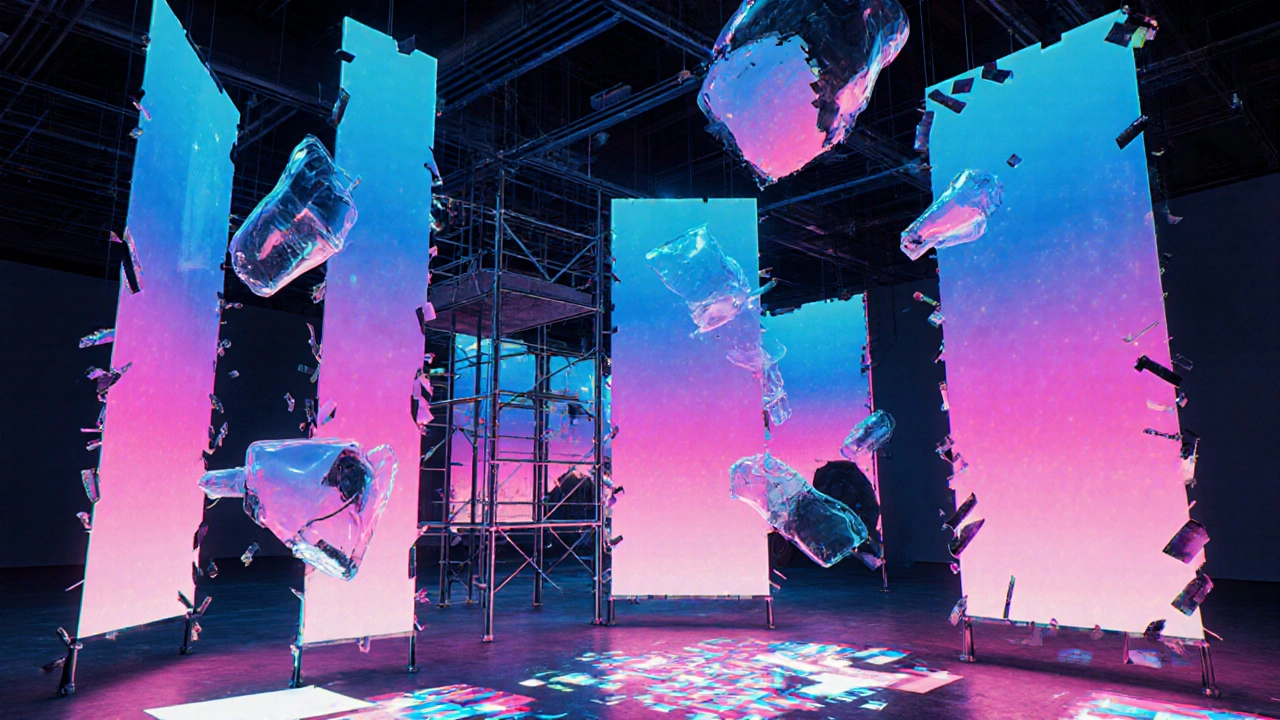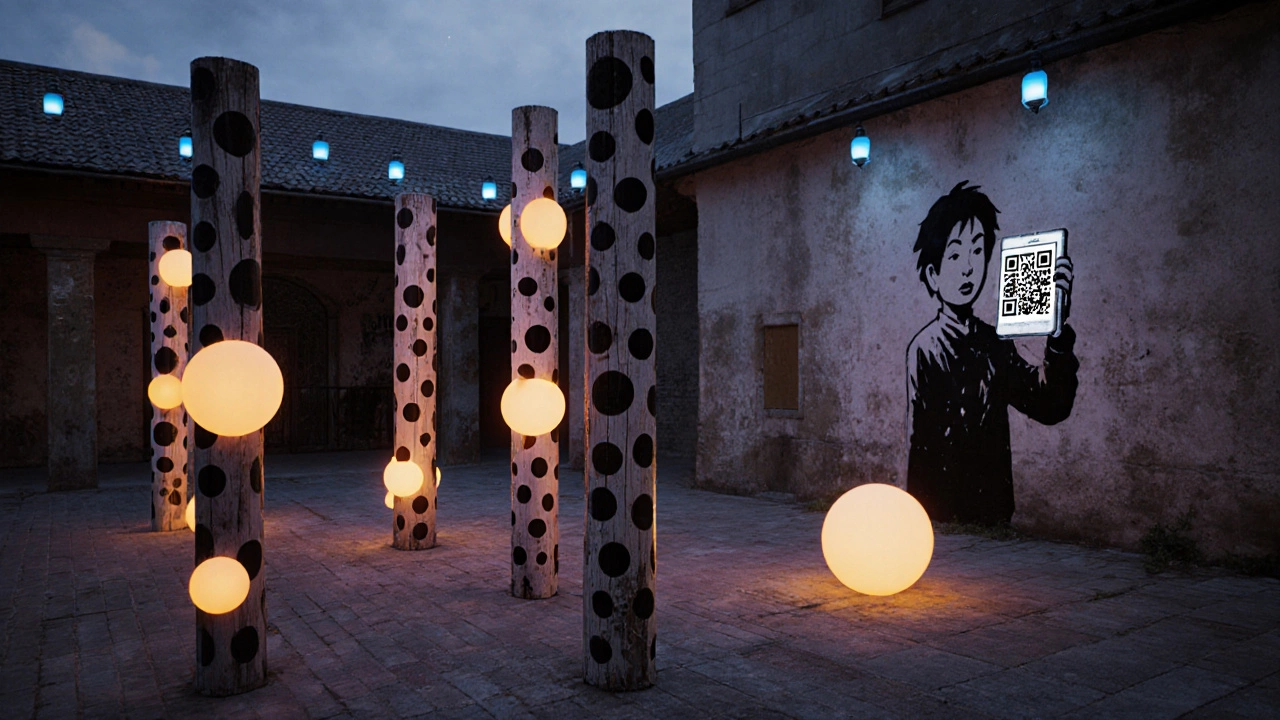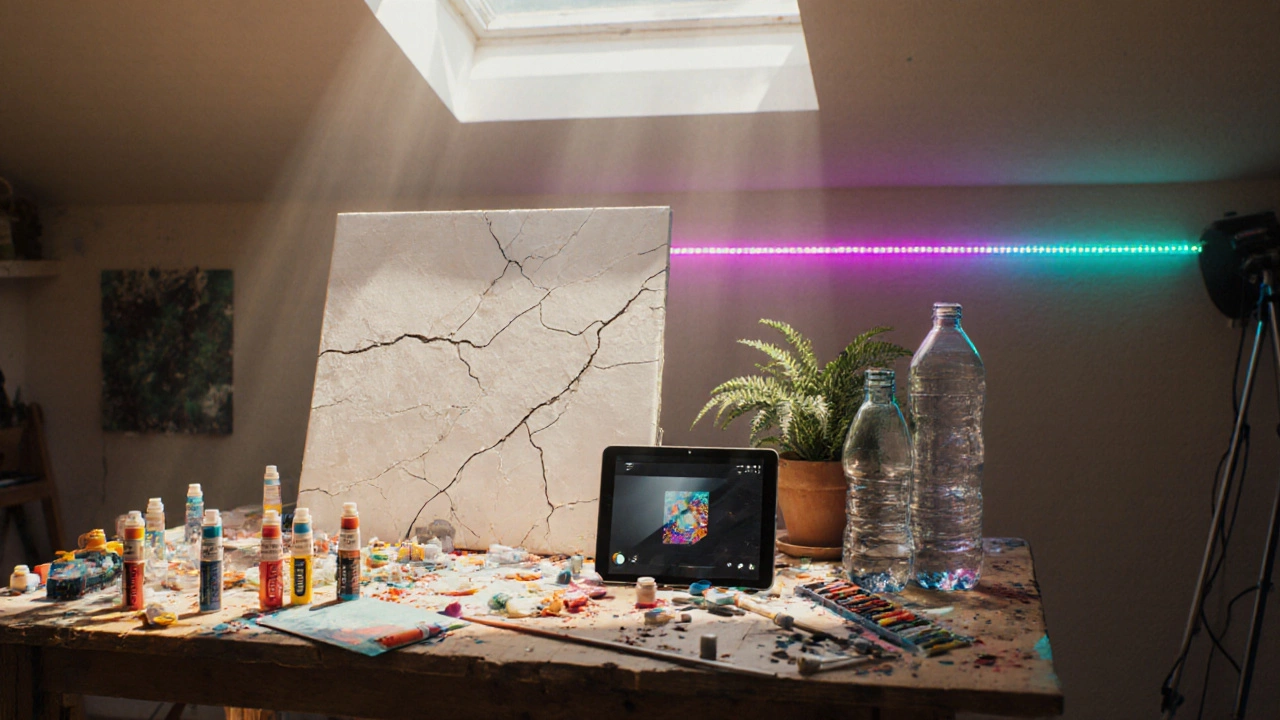Contemporary Art Evaluator
This tool helps you determine if an artwork qualifies as contemporary style based on the key characteristics outlined in the article.
Check the criteria that apply to your artwork:
Evaluation Results
Quick Summary
- A contemporary style blends mixed media, technology, and social issues.
- Key visual cues include bold colour shifts, fragmented forms, and interactive elements.
- It differs from modern art’s formalism and post‑modernism’s irony.
- Major players range from AiWeiwei to street‑art collectives like Banksy.
- Use the checklist below to spot or create contemporary‑style work.
When we talk about contemporary style is a current artistic approach that blends diverse media, concepts and social commentary, reflecting the fast‑changing world of the 21stcentury. It isn’t tied to a single technique; instead, it pulls from technology, activism, and global culture. If you’re looking to spot a true contemporary style work, remember these clues.
Defining the Contemporary Style
At its core, the contemporary style is characterized by three pillars:
- Material hybridity - artists combine paint, video, digital code, recycled objects, and even living plants.
- Conceptual depth - the idea often outweighs the visual finish. Themes like climate change, identity, and data surveillance dominate.
- Audience interaction - many pieces invite viewers to touch, move, or even co‑create.
Unlike earlier periods that emphasized pure aesthetic values, contemporary creators aim to blur the line between art and everyday life.
Visual Hallmarks You Can Recognize
Spotting contemporary style becomes easier once you know its visual language. Look for:
- Bright, non‑traditional colour palettes that shift like a digital gradient.
- Fragmented or distorted forms that suggest motion or data glitches.
- Use of industrial or recycled materials - think metal scaffolding, plastic bottles, or shipping containers.
- Integration of LEDs, projection mapping, or augmented‑reality overlays.
- Large‑scale installations that occupy entire rooms or outdoor sites.
These elements often appear together, creating an immersive experience that feels both familiar and unsettling.

How Contemporary Differs from Modern and Post‑Modern
| Aspect | Modern Art (c.1860‑1970) | Post‑modern (1970‑1990) | Contemporary (1990‑present) |
|---|---|---|---|
| Primary Goal | Formal innovation, abstraction, breaking tradition. | Critique of grand narratives, irony, pastiche. | Engage society, merge media, provoke dialogue. |
| Typical Materials | Oil, canvas, sculpture (bronze, stone). | Mixed media, recontextualised objects. | Digital screens, LED, recycled waste, bio‑materials. |
| Relationship to Viewer | Observer at a distance. | Viewer as a critic of cultural signs. | Participant, sometimes co‑author. |
| Key Themes | Industrial progress, pure form. | Consumerism, media saturation. | Identity politics, climate emergency, data privacy. |
Modern art laid the groundwork with abstraction, while post‑modernism added a layer of skepticism. Contemporary style takes both forward, but its biggest leap is the embrace of technology and activism.
Major Movements Within Contemporary Style
Although the term “contemporary” is umbrella‑wide, several sub‑movements have solidified:
- Minimalism - stripped‑down forms, often using industrial materials.
- Conceptual art - idea over execution, frequently manifested through installations or text.
- Installation art - site‑specific experiences that transform spaces.
- Digital media - video art, VR/AR, algorithmic generative works.
- Street art - large‑scale murals, stencils, and guerrilla installations that bring the gallery onto city walls.
Each sub‑movement shares the contemporary hallmark of crossing disciplinary borders.
Key Artists Shaping the Contemporary Landscape
To really understand the look, study the work of artists who have defined the era:
- AiWeiwei - uses reclaimed wood, steel, and social media to comment on human rights.
- Yayoi Kusama - famous for immersive LED rooms and endless polka‑dot installations.
- Jeff Koons - hyper‑realistic balloon animals that blend pop culture with high‑gloss finishes.
- Banksy - street‑art provocateur whose stencil works carry sharp political messages.
- Olafur Eliasson - creates atmospheric installations that manipulate light, water, and temperature.
Notice how each artist merges traditional techniques with new media or urgent social topics - a hallmark of contemporary style.

How to Evaluate a Piece for Contemporary Qualities
When you stand in front of a painting, sculpture, or digital setup, ask yourself these three questions:
- Does the work combine at least two distinct materials or media?
- Is there a clear conceptual or societal message driving the visual?
- Does the piece invite the viewer to interact, whether physically, digitally, or emotionally?
If the answer is yes, you’re likely looking at a contemporary‑style work. Use the checklist below as a quick reference:
- Mixed media ✔️
- Current issue focus ✔️
- Interactive element ✔️
- Use of technology (LED, VR, AR) ✔️
Creating Your Own Contemporary‑Style Piece
Want to join the conversation? Here’s a simple workflow:
- Pick a timely theme - climate change, data privacy, gender equality.
- Choose two contrasting materials - for example, reclaimed plastic and a projection video.
- Sketch a loose form that allows space for both media to interact.
- Prototype a small section, testing how the materials affect each other.
- Integrate an interactive layer - a motion sensor that triggers sound, or a QR code that leads to an online archive.
- Document the process and share on platforms like Instagram or a local gallery’s website.
This method keeps the focus on concept, material play, and audience engagement - the three DNA strands of contemporary style.
Frequently Asked Questions
Is contemporary art the same as modern art?
No. Modern art (late 19th‑mid 20thcentury) focused on formal experimentation, while contemporary art (1990‑present) blends media, technology, and current social issues.
What materials are most common in contemporary style?
Artists frequently mix traditional supplies (oil, acrylic) with digital screens, LED lights, recycled plastics, and even living organisms.
Can street art be considered contemporary style?
Absolutely. Street art embodies the contemporary ethos of public engagement, social commentary, and mixed media techniques.
How do I find contemporary art exhibitions near me?
Check major museum calendars (e.g., Tate Modern, MoMA), local art centre listings, and online platforms like Artsy or Eventbrite for upcoming shows.
Is it necessary to use technology to create contemporary art?
Technology is common but not mandatory; the key is the conceptual relevance and the blending of unexpected materials.
What are some beginner‑friendly contemporary projects?
Start with a mixed‑media collage using newspaper clippings, acrylic paint, and a small LED strip that lights up when viewers approach.

